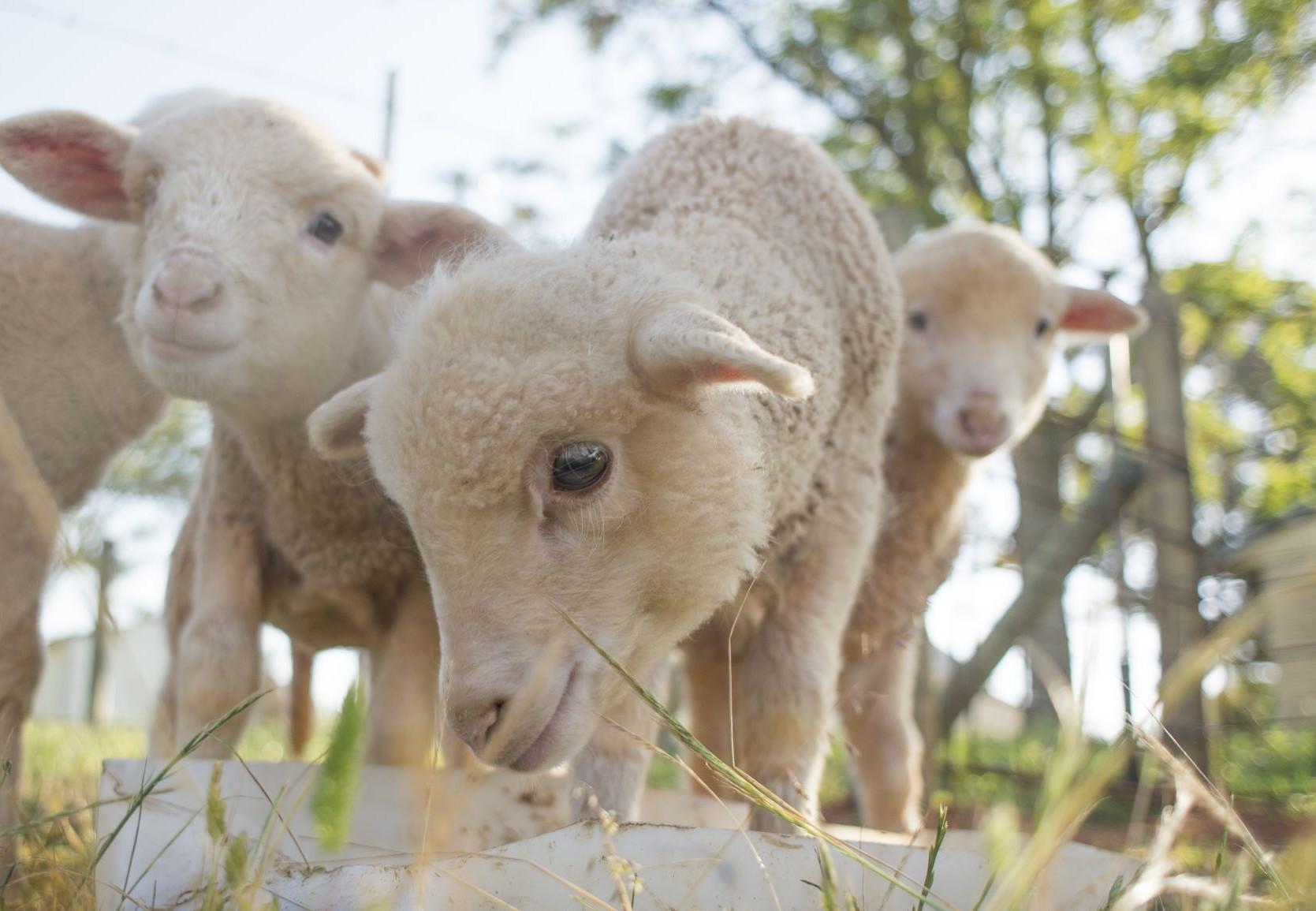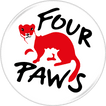
Sheep Wool
Lambs and sheep suffer horrendously for the bloody business of wool production
Today, there are over 1 billion sheep in the world!1 Australia is a major player in the wool industry and Merino sheep are the breed most often used for wool production on this continent. Sheep are complex, curious, and social creatures, who sadly are often treated poorly. They can be mutilated without pain relief, treated roughly when being shorn, experience the horrors of being exported for slaughter, and then there’s live lamb cutting (also known as mulesing).
What is live lamb cutting (mulesing)?
Australia is a major player in the wool industry and Merino sheep are the breed most often used for wool production on this continent.
Many producers in the Australian merino industry breed "wrinkled sheep" because they are thought to produce higher volumes of wool. Unfortunately, these wrinkles provide the ideal conditions for fly larvae to grow, and this makes sheep particularly susceptible to a painful condition called "flystrike" which occurs when flies lay their eggs and larvae grow and feed on the skin and flesh primarily around the sheep’s hindquarters.2
Nobody, including the sheep farmers, wants to see sheep suffer the pain of flystrike.
Thankfully, thousands of Australian farmers are having great success with humane solutions. But many more resort to the cruel and outdated practice of lamb cutting, which involves restraining lambs, usually 2-12 weeks old, on their backs in a metal cradle and using shears, similar to garden shears, to cut large folds of skin away from around their buttocks in an effort to create scar tissue which is less prone to fly strike.3 This extremely traumatizing mutilation, is often undertaken without adequate pain relief and is currently performed on approximately 70% of Merino wool-producing sheep in Australia.4

Note: Any advertisements that may appear during the viewing of this video are unrelated to FOUR PAWS. We assume no liability for this content.
Lambs feel every bit of the shear cutting straight through their flesh. The pain lasts for days and the wound needs weeks to heal. Some also die contributing to the already alarming high number of lamb deaths in Australia. Despite being the largest wool producer for the global fashion market Australia’s lamb mortality rate surpasses the global average rate by 10% leading to over 10 million lambs perishing every year. Read more about it here. We have also taken these findings to key stakeholders to call for improvements.
What are we doing?
FOUR PAWS advocates for pain-free solutions:
- The use of flystrike resistant sheep breeds e.g., plain bodied sheep with no skin wrinkles
- Improved farming practices such as increased monitoring and crutching (shearing around the tail and between the rear legs of sheep)
- The use of preventative chemical treatments
We work directly with farmers and assist with the development and strengthening of animal welfare certification systems, such as the Responsible Wool Standard (RWS). We also fund research into humane solutions, such as the report by BG Economics - "Towards a Non-Mulesed Future."
Brands and consumers are a crucial component of the solution.‚ÄØHundreds of thousands of people have called for an end to live lamb cutting and, encouragingly, over‚ÄØ400 brands‚ÄØincluding Hugo Boss, Adidas, Calvin Klein, Kathmandu, Country Road Group, and H&M have banned mulesed wool.
"Live lamb cutting has been banned in New Zealand and FOUR PAWS won't give up the fight until it no longer happens in Australia. It is time for the Australian wool industry to put lamb cutting in the past and prepare for the future,” says Rebecca Picallo Gil, Wool Campaigner at FOUR PAWS.

FOUR PAWS’ Jessica Medcalf with Henry at Where Pigs Fly animal sanctuary
What You Can Do
- Sign our‚ÄØ‚ÄØcalling on brands and the Australian wool industry to end live lamb cutting once and for all.
- Consider alternatives! See more in our "How to Wear it Kind Guide" and our "Guide to Knitting Kind".
- Encourage brands to sign the‚ÄØ"Brand Letter of Intent" to go live lamb cutting.
- If you do want to purchase wool, ensure it is Responsible Wool Standard (RWS), NATIVATM‚ÄØor ZQ Merino certified.
Source
2. Sheep Flystrike Risk Factors, Australian Wool Innovation (AWI).
3. Tail docking and mulesing, Meat & Livestock Australia. MLA Corporate.
4. Managing non-mulesed sheep, WA Department of Agriculture.
